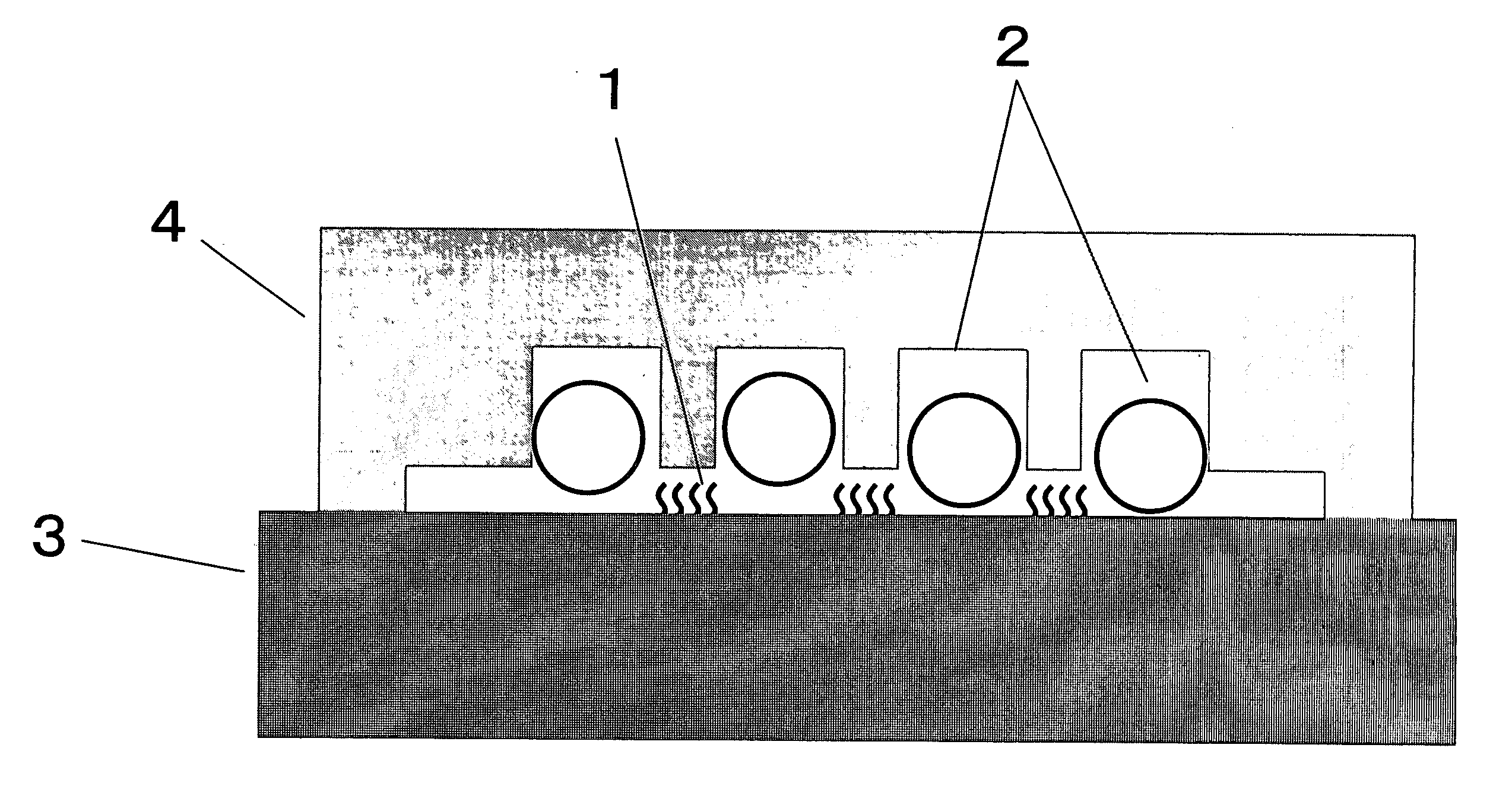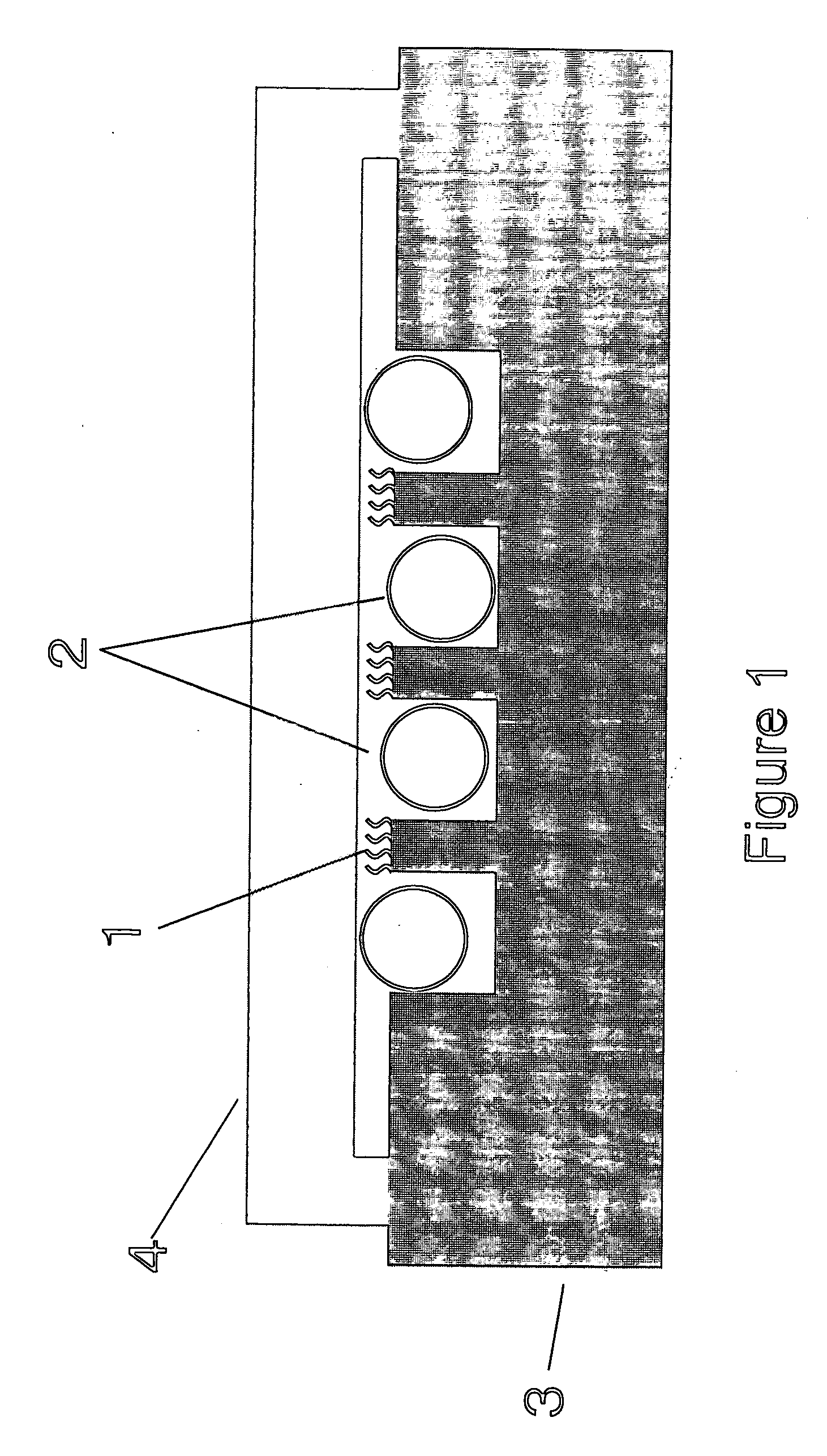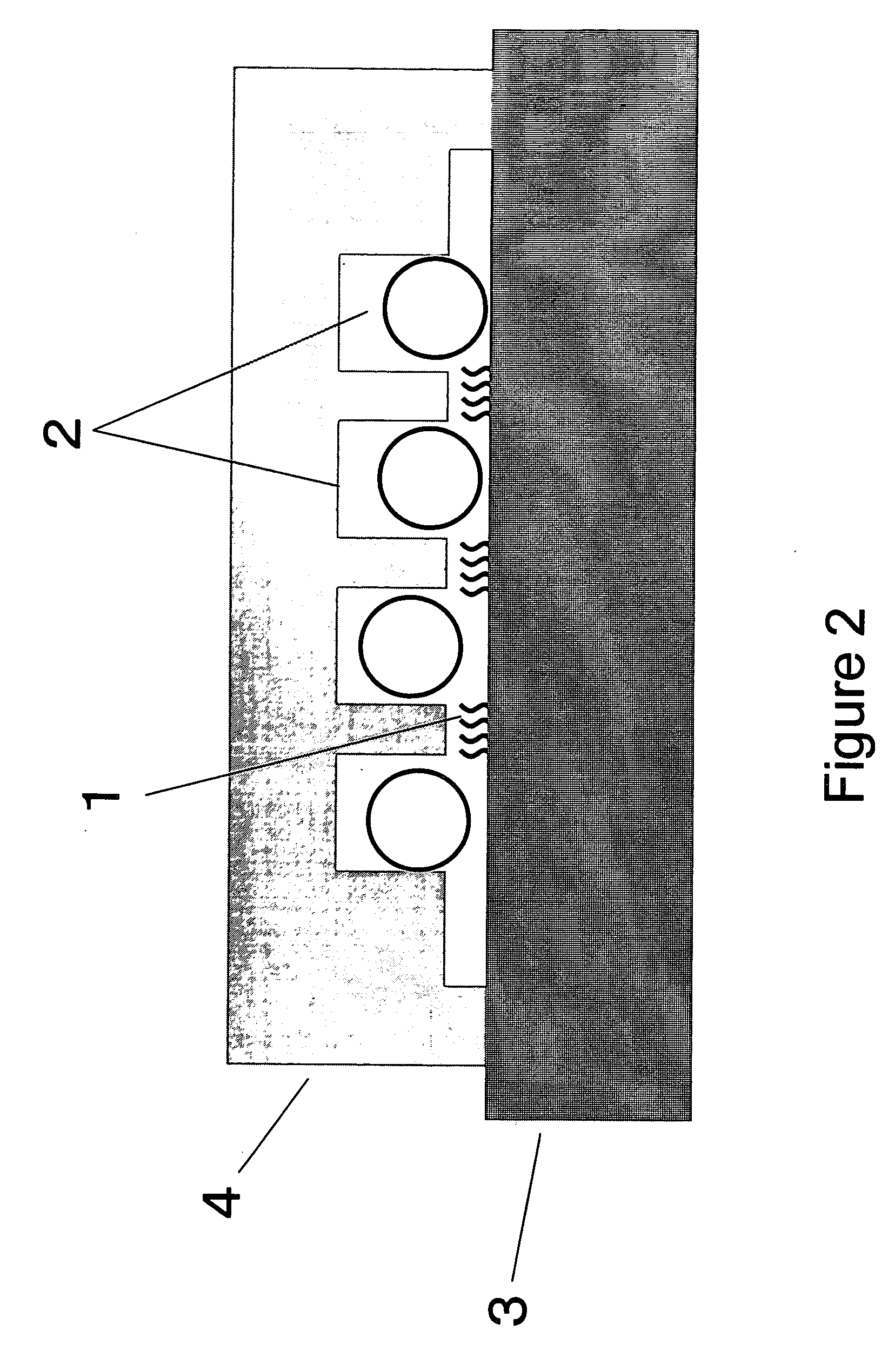Method of agitating solution
a technology of solution and stirring, which is applied in the field of stirring solution, can solve the problems of insufficient sensitivity of dna chips, inability to analyze such samples, and lower fluorescence intensity of genes, so as to achieve favorable use of the material for the container, prevent damage, and sufficient stirring of the analyte solution
- Summary
- Abstract
- Description
- Claims
- Application Information
AI Technical Summary
Benefits of technology
Problems solved by technology
Method used
Image
Examples
example 1
[0113] (Preparation of DNA-Immobilized Support)
[0114] A mold for injection molding was prepared according to a known LIGA (Lithographie Galvanoformung Abformung) process, and a PMMA substrate having the shape described below was prepared by injection molding. The PMMA used in this Example had an average molecular weight of 50,000 and contained carbon black (#3050B, manufactured by Mitsubishi Chemical Corp.) at a ratio of 1 wt %, and the substrate was black in appearance. When the spectroscopic reflectance and transmissibility of the black substrate were determined, the spectroscopic reflectance was 5% or less at a wavelength in the visible light range (wavelength: 400 to 800 nm), and the transmissibility was 0.5% or less at a wavelength in the same range. The substrate had a uniformly flat spectrum without a particular spectral pattern (e.g., peaks) both in spectroscopic reflectance and transmissibility in the visible light range. The spectroscopic reflectance is a spectroscopic re...
example 2
[0141] An experiment on stirring efficiency was performed by using air bubbles. The experiment procedure was similar to that in Example 1, except that 0.9 μL of air bubble was injected with a microsyringe, instead of adding glass beads, when a cover glass is placed in the hybridization step. The carrier was fixed in such a direction that the revolving plate of rotator tilted into the vertical direction and the probe-immobilized face of the carrier became in parallel, and rotated, allowing air bubbles to migrate only around the sealed analyte solution. In this way, air bubbles were kept separated from the probe-immobilized face. Results are summarized in Table 1. Advantageous effects similar to those in Examples were observed.
example 3
[0142] An experiment similar to Comparative Example 2 was performed, by using a container for solution 4 having the cross-sectional structure shown in FIG. 2 instead of a glass cover. That is, the convex-concave structure was formed not on the carrier but on the cover. The container and the flat PMMA carrier were placed carefully in the spatial relationship shown in FIG. 2. In subsequent hybridization while the beads are agitated, it was possible to move the glass beads without contact thereof with the probe DNA-immobilized face 1, because the distance between the probe DNA-immobilized face and the container for solution 4 was smaller than the diameter of the glass beads 2. Results are summarized in Table 1. The fluorescence intensity obtained was similar to that in Example 1. Considering the results in Comparative Example 2 as well, it seems important that the beads do not become in contact with the probe-immobilized face. In the method of the present Example, accurate positioning ...
PUM
| Property | Measurement | Unit |
|---|---|---|
| Width | aaaaa | aaaaa |
| Height | aaaaa | aaaaa |
| Width | aaaaa | aaaaa |
Abstract
Description
Claims
Application Information
 Login to View More
Login to View More - R&D
- Intellectual Property
- Life Sciences
- Materials
- Tech Scout
- Unparalleled Data Quality
- Higher Quality Content
- 60% Fewer Hallucinations
Browse by: Latest US Patents, China's latest patents, Technical Efficacy Thesaurus, Application Domain, Technology Topic, Popular Technical Reports.
© 2025 PatSnap. All rights reserved.Legal|Privacy policy|Modern Slavery Act Transparency Statement|Sitemap|About US| Contact US: help@patsnap.com



